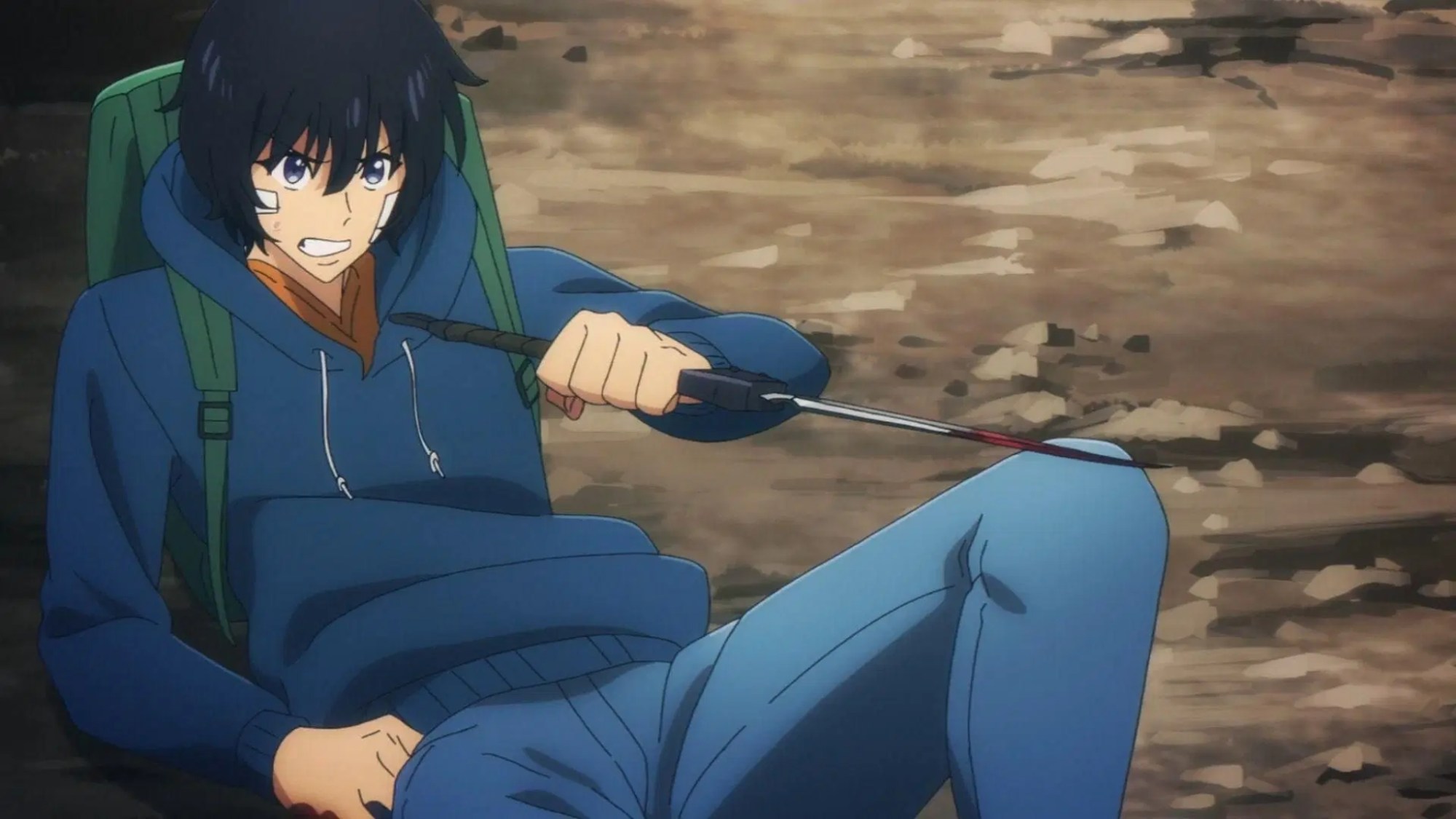The hit anime Solo Leveling follows E-rank hunter Sung Jinwoo, after he acquires the leveling system, in a world where a monster hunter's rank cannot be changed.
With the system, Jinwoo completes dangerous challenges and rigorous training regimens to become the strongest hunter in the world. As seen, the Jinwoo appearing in season 1, episode 1 and the Jinwoo appearing in the newly released season 2 are almost like two different people. But does Jinwoo's seemingly harsh workout regimen actually work in real life and should you follow suit?
When Jinwoo woke up in the hospital after the double prison incident in the first two episodes of season 1, he received a daily challenge. Jinwoo had to run 10 km, in addition to doing 100 push-ups, 100 sit-ups, and 100 squats. Any savvy anime fan will recognize it as Saitama's workout routine in One-Punch Man.
At first, this routine seemed difficult for Jinwoo and any viewers who saw it appear on screen. But in fact, you can absolutely follow this daily challenge on your own. Although you may not become a Shadow Monarch, you will still gain significant strength and endurance.

Sung Jinwoo's exercise was flawed but could still be done
Before we analyze how to complete Jinwoo's workout routine, let's see how it works and what effect it will have on the body. With a good diet, regularly performing this habit can give you a slim and healthy figure.
You won't gain muscle and look like Goku doing this exercise. Push-ups, squats and sit-ups are known as healthy exercises. Because of the high repetition range required to achieve muscle fatigue, these three exercises will test your muscular endurance (how long your muscles can perform a strenuous task) rather than your strength. strengthen your muscles. Your muscles will be lifted and possibly grow a bit, but high rep ranges are not optimal for bodybuilding style muscle growth.
Although 100 push-ups may seem incredibly difficult, they're actually not that difficult if you break them down into smaller, more achievable goals. If you can't do 100 reps, divide it into 10 sets of 10 reps each, resting at least one minute between each set. After all, Jinwoo had 24 hours to complete the challenge every day. The same goes for squats and crunches. Breaking it down into small goals not only makes it less mentally challenging but also physically easier to accomplish.
If you are unable to perform any of the three exercises above, perhaps due to limitations in your current physical strength or due to mobility issues, there are many alternatives to each exercise.
If you can't do full push-ups, try doing them on your knees; This makes it a little easier for beginners. If that also seems too difficult, doing them on a raised surface like a table also helps reduce muscle tension. For squats, placing a slightly elevated object under your heels can help increase mobility for a deep squat. Additionally, negative squats are a great way to gradually build up to a full squat. Stand in front of a chair and slowly (and controlled) lower yourself into the chair. Then, stand up and repeat. For crunches, the same yin method is applied. Start sitting straight with your knees bent, then slowly lower your body to the floor. Reset and do it again.

Jinwoo's 10km running challenge
Even for professional runners, running 10 km every day is a difficult task. When you first start your fitness journey, it will also take a lot of time. But this challenge is also easy to break down into achievable goals.
Start by taking 10,000 steps a day. It doesn't have to be running, even 10,000 steps while walking has incredible benefits for your long-term health. Once you feel comfortable, try running 2-3km three times a week (a 3km run shouldn't take more than 25 minutes for slow runners, although it's perfectly fine if it takes you longer). Once you feel comfortable, gradually increase to 5km two days a week and possibly 10km once a week. These slow progressions will eventually accumulate into lasting achievements.
Running every day will be extremely beneficial for your heart and long-term health, as well as providing countless medical benefits. In addition, jogging will also help grow some muscles in your calves.

Problems with Jinwoo's daily practice
It's important to note that Jinwoo's daily exercises were not compiled by a professional trainer, so there were still some major errors.
First and foremost, a daily training schedule like this has little rest time. For Jinwoo, this was not a problem, as he was fully restored after completing the trial. But we don't.
High-intensity workouts create small tears in your muscles. As your body repairs these tears, it adapts and repairs. But without rest, your body can't repair itself, and all that hard work will only lead to injury and extreme fatigue. This is not a problem for push-ups, sit-ups, and squats. But, especially if you're new to running, don't try to run 10km every day. Running three times a week is enough for anyone. When you feel comfortable, you can run more often.
Additionally, Solo Leveling exercises skip a major muscle group. Looking at Jinwoo in season 2, his shoulders have expanded exponentially since the first episode. This is the result of growth in the latissimus dorsi, the muscles on each side of your upper back. However, without any exercises that target those muscles, Jinwoo cannot grow.
Back muscles are suited to exercises that use a pulling motion. Pull-ups are the best, but they are also extremely difficult and doing 100 pull-ups is a challenge even for many professional athletes. The best alternative is to buy a cheap resistance band, hook it to something sturdy, and do rowing exercises. If you don't exercise your back, not only will you look out of shape, but extreme muscle imbalances can lead to serious back and shoulder injuries.